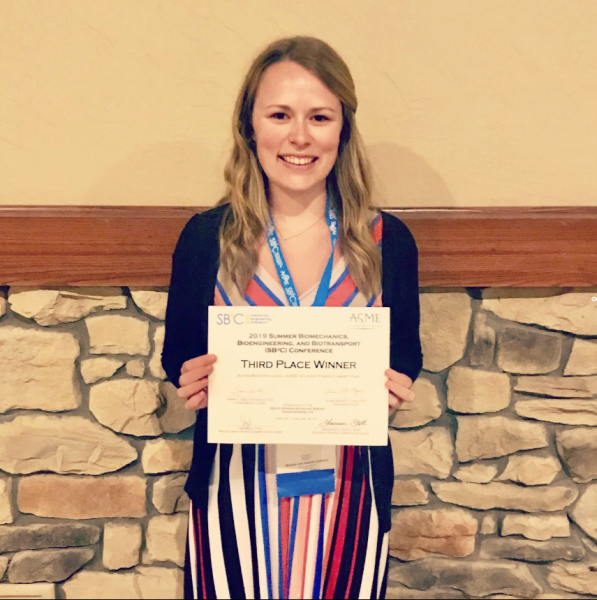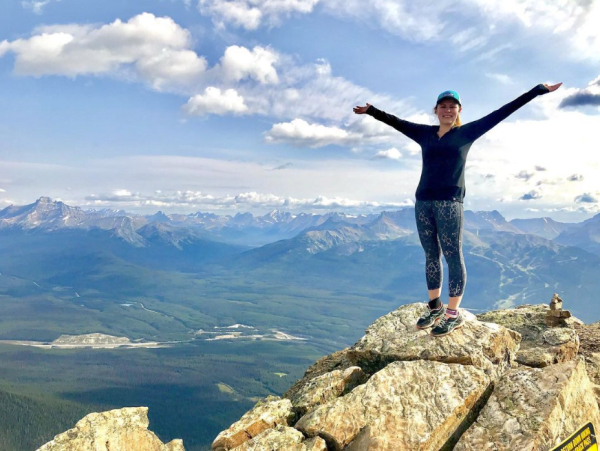“We can learn so much from listening to people with different lived experiences.”
The Americans with Disabilities Act (ADA) was signed on July 26th, 1990, to prohibit discrimination against people with disabilities across many areas, including employment, transportation, public accommodations, and more. As of 2020, 61 million adults in the United States live with a disability. We spoke to Truvetan Brianna Goodwin, a Senior Research Data Analyst, about her previous work in accessibility and how she approaches data at Truveta.
Tell me a little about your background?
My involvement with accessibility began when I was in undergrad at Oregon State University, working with an organization called Go Baby Go. We adapted a toy car that would move when the child was standing for kids with limited physical mobility. When I started at University of Washington, I was part of the student team who started HuskyADAPT (Accessible Design And Play Technology). We taught a community of students and others about adapting toys for kids with disabilities and facilitated a space for students to co-create functional design projects. At the same time, I started my thesis working at Seattle’s Children’s Hospital, working with wearable sensors to monitor a therapy for kids with cerebral palsy. My thesis was called “Wearable Technology to Monitor Hand Movement during Constraint-Induced Movement Therapy for Children with Cerebral Palsy.”
What did you study in school?
I studied mechanical engineering, but my focus is at the intersection of healthcare, data, and engineering principles.
What types of roles did you have before Truveta?
At Mayo Clinic, I worked as a research engineer on a clinical research team. We studied the biomechanics of people who have spinal cord injuries who use manual wheelchairs. We investigated real-world kinematics using wearable sensors for people who use a manual wheelchair (with and without shoulder pain/pathology) and able-bodied individuals. I’ve also spent time working as a data scientist on a health equity team at Microsoft. We collaborated across multiple industries with the goal of identifying trends to improve equity in patient outcomes.

Brianna placed third at the 2019 SB3C (Summer Biomechanics, Bioengineering, and Biotransport Conference).
What brought you to Truveta?
What brought me to Truveta was the near real-time data. There is so much potential to generate insights, inform science, and hopefully collaborate to enact change based on what we learn. Accessibility and the care experiences of people with disabilities are especially important to study because over a quarter of the US population lives with a disability, and the percentage only increases in older populations. For those in smaller sub-populations, having a large, diverse dataset will help us uncover new insights for groups who may have been previously overlooked.
How does health equity connect to your work?
Unfortunately, our health care system has bias built in which prevents access to equitable treatment for all people.
It’s so important that as we study accessibility, we bring people with lived experiences onto our teams. Sometimes people with disabilities are researchers and other times the onus falls upon the research team to bring the voices of the people in the study population to the table. Either way, it’s critical that we elevate their work and voices to ensure they are heard. This helps ground research in lived experience and avoids it being conducted in a silo.
When I was at the University of Washington (as part of HuskyADAPT), we held panel events, where we invited individuals in the community who had a disability to share their experiences with accessibility. At the time, scooters were all over campus. One of the students who used a powered wheelchair discussed how the scooters were a daily hindrance for her. She described how when the scooters were parked in the middle of the sidewalk she couldn’t get around and, in some circumstances, had to take a more different route to get to where she was going. If I hadn’t taken the time to listen, I may not have realized how big of a hindrance this was for a fairly large group of people.
Looking forward, I’m excited to dig into Truveta’s access of care data and ask questions about the relationship with treatment outcomes.
What’s the most rewarding part about your role?
The most rewarding part of my job is being able to work on something that can have such a positive impact on so many people’s lives. I feel fortunate to be one of the first people to explore the Truveta data and really dig in. Each day I hope that what I’m doing is bigger than myself, and I see that lived out through Truveta’s mission and vision.
What does Truveta’s vision — saving lives with data — mean to you?
All of our lives are so intertwined with our health. And our health is so intertwined with how we are able to live our lives. I think there are two critical steps to saving lives with data. The first step is finding actionable insights in our data, such as better understanding access, treatment and therapy outcomes, etc. The second step is using those insights to enact change. If we are constantly learning, but not putting those learnings into practice, then what good is it?
Further, I can imagine a situation where we’re able to learn from the large diverse dataset, and create predictions/understand outcomes that impact an individual patient (based on their data). What excites me, is if those insights could then be provided to the patient in near-real time to improve their understanding of their potential health and upcoming health-related decisions.
Have you had any great mentors along the way, and what have you learned from them?
One of the best mentors I had was my boss at Mayo Clinic, Missy Morrow. There are so many scientific and personal qualities I admire about her. Two of the things I admire most are her ability to tackle challenges head on, and her ability to have the hard conversations.
How has the pandemic changed the way you work/prefer to work:
Let’s just say my home office has gotten substantially better since the beginning of the pandemic. I’ve learned I’m more productive at home with my cat napping on my lap. However, I’m really enjoying a hybrid work lifestyle and the in-office organic conversations with coworkers.
As you’re doing research, what’s something you want people to remember?
Make sure that whoever you are studying — whether or not that includes people with disabilities — that group needs to be a part of your team and your conversations. Listening is key. We can learn so much from listening to people with different lived experiences than us.

